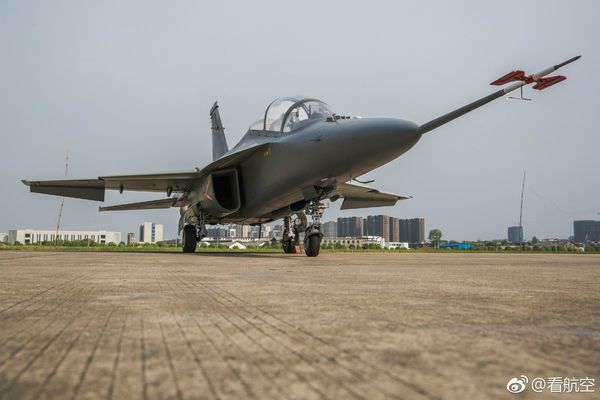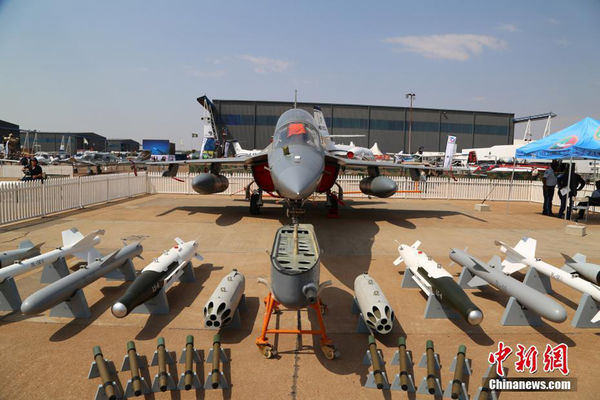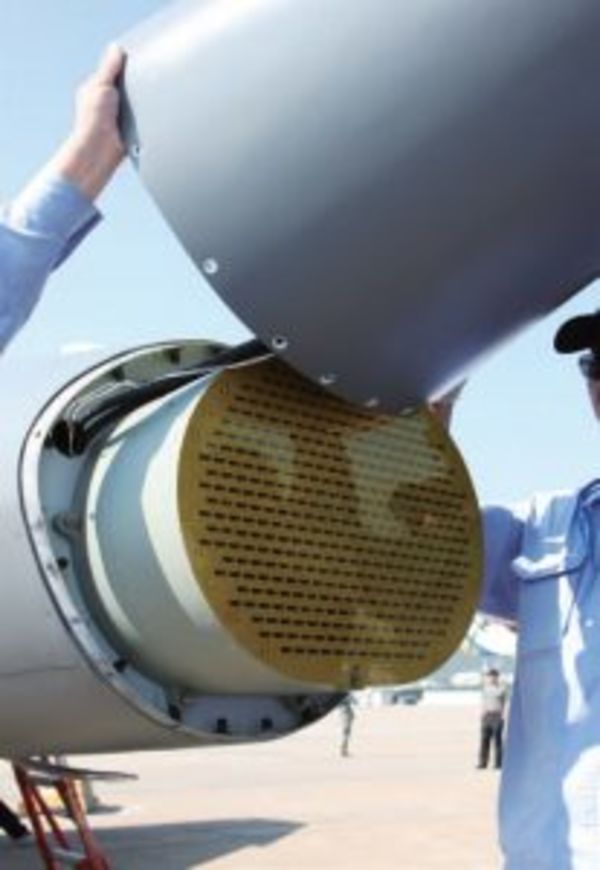


The L-15B prototype attack jet made its grand debut in a ceremony last week. Fanfare—including giant red banners and uniformed PLAAF officers—suggest the People's Liberation Army Air Force (PLAAF) and Hongdu Aviation Industry Group have high hopes for this multi-role light fighter.

The Next Generation
The L-15B, despite being derived from a fighter trainer, is still more capable than the Cold War-era J-7 fighters and Q-5 attack jets that it will likely replace.
Wechat via Andreas Rupprecht
If HAIG's L-15 advanced jet trainer is any indication, the attack version of the L-15B has a maximum take-off weight of around 9.6 tons and uses WS-17/AI-222K-25F turbofan engines to reach a top speed of Mach 1.4.
The L-15B deletes the flight instructor's rear seat to save weight, and can carry about three tons of weapons on its nine hardpoints (one under the fuselage and four on each wing). For ground attack, it can carry HJ-10 anti-tank guided missiles, and the LS series of 250-500kg laser- and satellite-guided bombs.
The L-15B can carry a wide range of Chinese lightweight aircraft sensors, like multi-mode targeting pods and electronic jammers. It is also fitted with an electronically scanned array radar, which enables it to serve in an antiaircraft role, using PL-12 long-range air-to-air missiles and PL-10 infrared-guided short-range missiles. Additionally, it could extend its 500km combat radius with fuel drop tanks to increase range and on-station flight time.
L-15B
The L-15B, a multirole variant of the JL-10, is equipped with long-range air-to-air and air-to-surface attack capabilities, making it a cheap, modern multirole aircraft. Seen in this model, it can carry four anti-tank missiles, two PL-12 BVRAAMs, two PL-8 WVRAAMs, two laser-guided bombs and a fuselage-mounted targeting pod.
Da Hai
Previously only previewed in model form at airshows, the new plane is likely to draw from Hongdu's experience with the export L-15Z, a L-15 multirole variant built for the Zambian Air Force. The PLAAF has already acquired several squadrons of L-15 jet trainers to train its pilots for fourth- and fifth-generation fighter operations, so the L-15B should be inducted into service with minimal fuss.

L-15
This L-15, based on the L-15Z export variant developed for Zambia, displayed at the Zhuhai 2016 Airshow.
Xinhua News Agency
The L-15B could replace many of China's Cold War-era light fighters like the J-7 fighter and Q-5 attack aircraft. Its basic long-range air-to-air combat capability gives it some level of protection against modern opponents, and its cheap cost means that it would make a readily available close air support (CAS) platform for Chinese ground forces (compared to, for example, an expensive J-16 multirole fighter). In addition to plastering enemy positions and armor with guided munitions, the L-15B can share its sensor data with ground forces through networks, as well as provide a rudimentary level of air defense in high-threat environments.

Radar
The L-15B is equipped with an electronically scanned array radar, which has a range of more than 68 miles, making it a respectable foe for modern fourth-generation fighters.
Chinese Internet
The L-15B is not only craft that toes the line between a trainer and a light fighter. The South Koreans have turned its KAI T-50 Golden Eagle jet trainer into the multirole FA-50 and the USAF itself is considering converting trainer aircraft into the light attack role under the A-X program.

EDITOR'S PICKS










